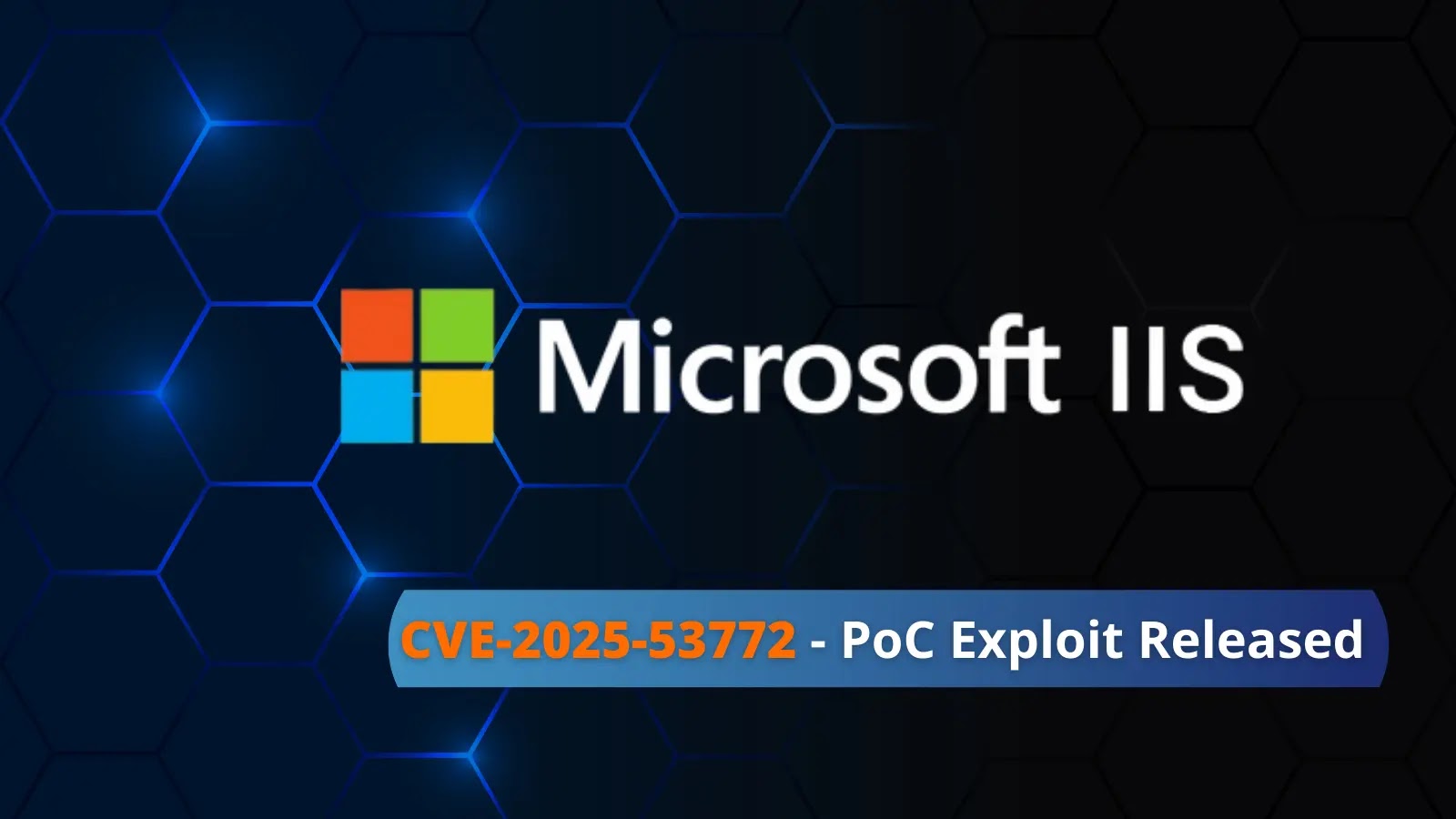
PoC Exploit Released for IIS WebDeploy Remote Code Execution Vulnerability
A significant cybersecurity alert has been issued for organizations utilizing Microsoft’s Internet Information Services (IIS), particularly those employing the Web Deploy (msdeploy) tool. A proof-of-concept (PoC) exploit for a critical remote code execution (RCE) vulnerability, identified as CVE-2025-53772, has been publicly released. This development sends urgent alarms across the .NET and DevOps communities, demanding immediate attention to safeguard vulnerable systems.
Understanding the IIS Web Deploy Vulnerability (CVE-2025-53772)
The core of CVE-2025-53772 lies in the unsafe deserialization of HTTP header contents within Microsoft’s IIS Web Deploy (msdeploy) tool. Specifically, the vulnerability affects both the msdeployagentservice and msdeploy.axd endpoints. This flaw permits authenticated attackers to execute arbitrary code on target systems. While the requirement for authentication might seem like a barrier, it’s crucial to remember that compromised credentials or insider threats can readily bypass this, elevating the risk significantly.
Deserialization vulnerabilities occur when an application attempts to reconstruct data that has been serialized (converted into a format for storage or transmission) without proper validation. If an attacker can inject malicious code into the serialized data stream, the application may inadvertently execute that code upon deserialization, leading to remote code execution.
Impact of the PoC Release
The public release of a PoC exploit for CVE-2025-53772 immediately escalates the threat level. A PoC provides bad actors with a blueprint for how to weaponize a vulnerability, significantly lowering the bar for exploitation. Organizations previously unconcerned or unaware of this specific weakness now face an active and demonstrable threat. This means:
- Increased Attack Surface: Any internet-facing IIS server with Web Deploy enabled becomes a prime target.
- Imminent Exploitation: Threat actors, including ransomware gangs and state-sponsored groups, are likely to integrate this exploit into their arsenals quickly.
- Data Breach Risk: Successful exploitation can lead to complete system compromise, data theft, and further network infiltration.
- Service Disruption: Attackers could also cause denial-of-service or tamper with web applications.
Remediation Actions and Mitigation Strategies
Given the severity and the public PoC, immediate action is paramount for all organizations using IIS Web Deploy. Prioritize these steps:
- Patching: Apply the latest security updates from Microsoft as soon as they become available. Keep a close eye on official Microsoft security advisories for the patch addressing CVE-2025-53772.
- Disable Web Deploy (if not critical): If IIS Web Deploy is not an essential component of your infrastructure, disable or uninstall it immediately. This removes the attack vector entirely.
- Restrict Access: For environments where Web Deploy is necessary, strictly limit network access to the
msdeployagentserviceandmsdeploy.axdendpoints. Implement firewall rules to permit connections only from trusted IP addresses or internal networks. - Principle of Least Privilege: Ensure that the service accounts running IIS and Web Deploy operate with the minimum necessary permissions.
- Strong Authentication and Endpoint Protection: Enforce multi-factor authentication (MFA) for all accounts with access to IIS servers. Ensure robust endpoint detection and response (EDR) solutions are actively monitoring these servers for suspicious activity.
- Network Segmentation: Isolate IIS servers running Web Deploy into a dedicated network segment, limiting their ability to interact with other critical internal systems.
- Security Auditing & Logging: Enhance logging for IIS and Web Deploy to capture detailed activity. Regularly review these logs for unusual patterns or failed authentication attempts.
- Vulnerability Scanning: Regularly scan your network for known vulnerabilities, including this one, and perform penetration testing to identify potential weaknesses before attackers do.
Relevant Tools for Detection and Mitigation
Deploying the right tools can significantly enhance your ability to detect and mitigate potential threats from CVE-2025-53772.
| Tool Name | Purpose | Link |
|---|---|---|
| Microsoft Defender for Endpoint | Endpoint Detection & Response (EDR), threat intelligence, vulnerability management | https://www.microsoft.com/en-us/security/business/threat-protection/microsoft-defender-for-endpoint |
| Nessus | Vulnerability scanning and assessment | https://www.tenable.com/products/nessus |
| OpenVAS | Open-source vulnerability scanner | http://www.openvas.org/ |
| Firewall/WAF Solutions (e.g., Azure Firewall, Cloudflare WAF) | Network perimeter defense, traffic filtering, Web Application Firewall capabilities | Azure Firewall | Cloudflare WAF |
| Splunk/ELK Stack | Centralized log management and security information and event management (SIEM) | Splunk | ELK Stack |
Conclusion
The release of a PoC exploit for CVE-2025-53772 in IIS Web Deploy represents a significant escalation in the threat landscape for affected organizations. Proactive and immediate action through patching, disabling unnecessary services, and implementing strong security controls is critical to protect your systems. Organizations must prioritize vulnerability management, maintain vigilant monitoring, and adopt a defense-in-depth strategy to mitigate the risks posed by this critical remote code execution vulnerability and similar threats.





